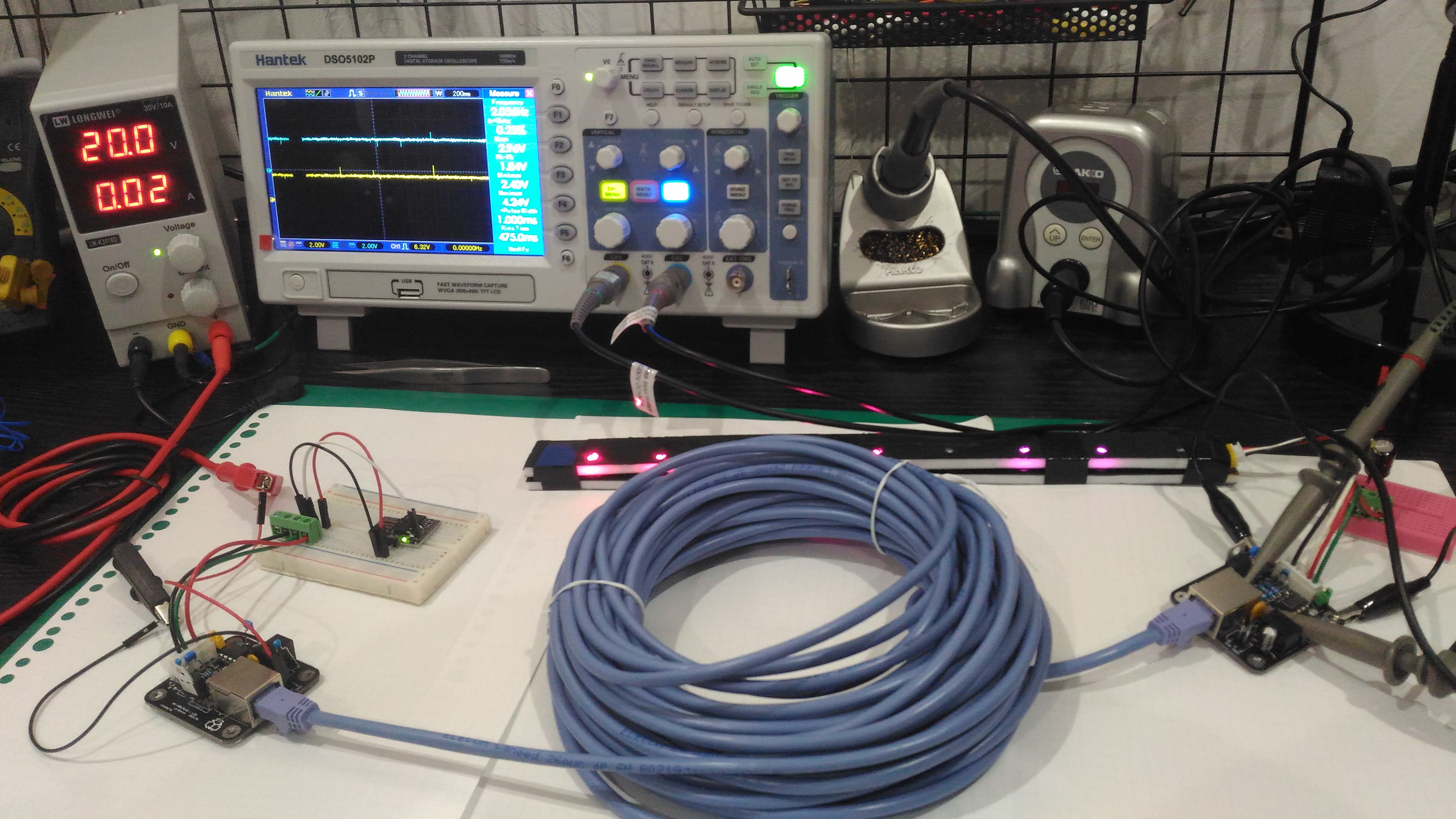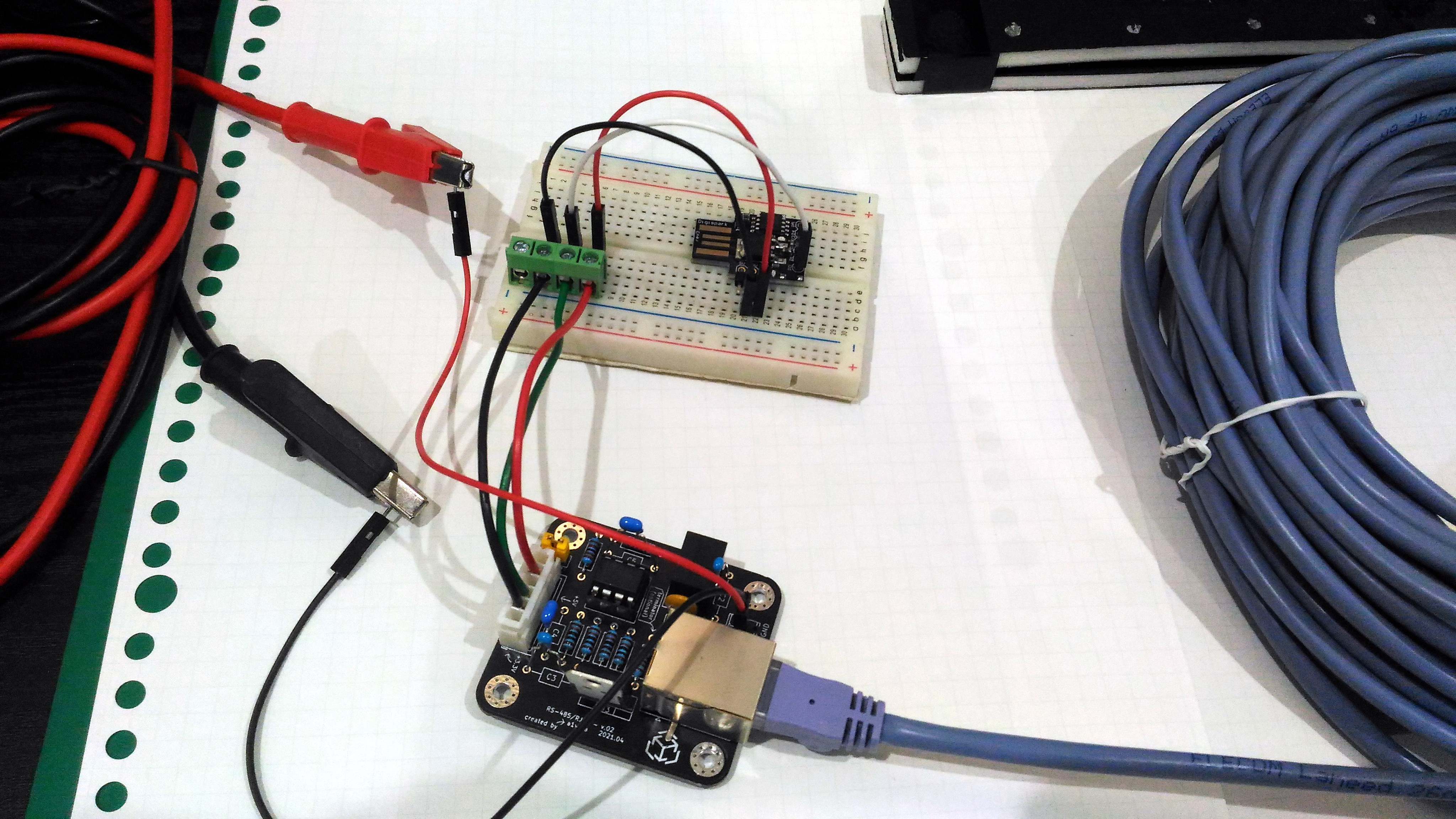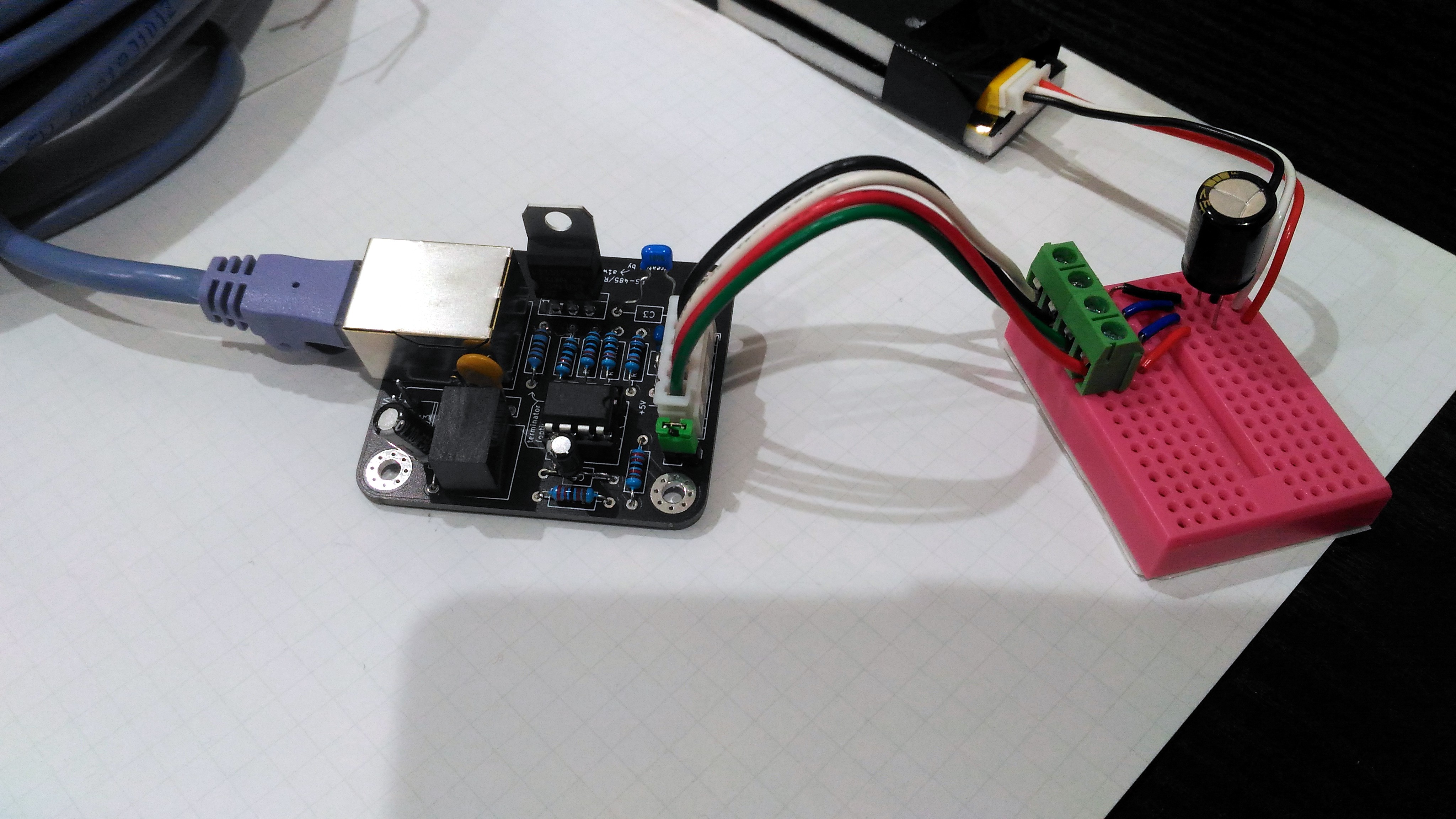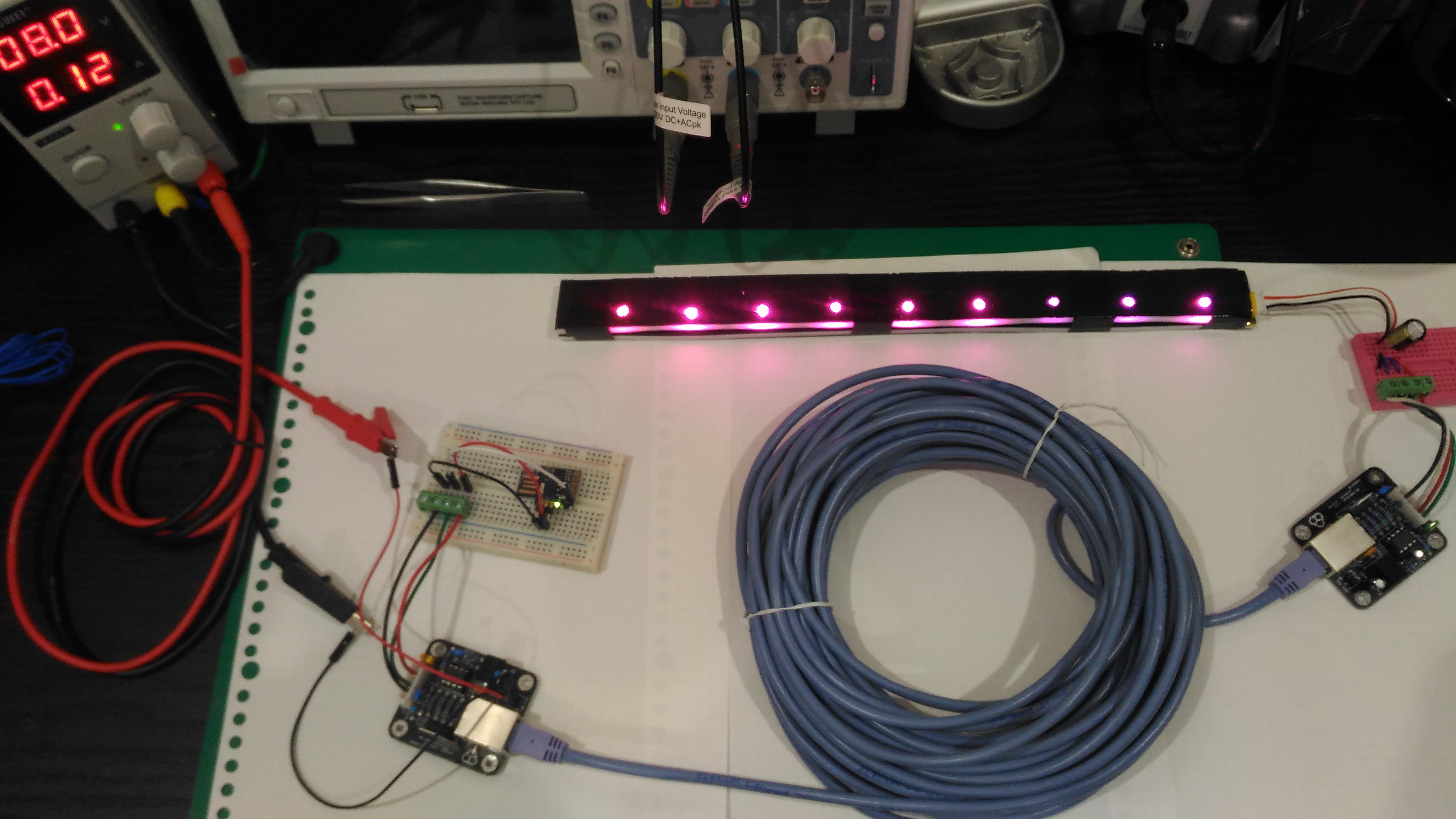I ran a battery of tests on two v.02 modules (soldered) and everything works perfectly!

I made two modules, one with electrolytic capacitors, and another with ceramic (ceramics were part of the v.02 design, electrolytic was just a random idea I wanted to test).
From the photo above, you can see the two modules connected through a 15m AWG26 RJ45 cable, and the left module is powered directly by 20V.

Here you can see the left module connections. It is powering a clone
DigiSpark with an ATtiny85, with 5V, which is programmed with the Adafruit Neopixel srandtest example program configured for 9 LEDs. The connector only needs 3 wires: 5V, GND, signal (DI). Since RE is pulled high by default, the DigiSpark is set to "Drive" mode so I didn't need to wire the RE pin.

Here we have the right module connections. It is powering a small strip of nine WS2812 LEDs. In this case the connector has 4 wires: 5V, GND, signal (RO), and RE, and I use a tiny breadboard to tie RE to GND - thus setting it in "Receive" mode.
The v.03 module has a nice feature that lets us tie RE/DE to ground or high through simple DIP switches. We'll also be free to set the operating mode manually, or wire everything to the MCU and set them through code.

It works at minimum 8V too, however the LEDs pull significantly more current at that voltage. I did check the temperature of the switching regulators with a type K thermocouple, and it didn't seem to go over 28deg C. Although that's hardly conclusive considering the low current being drawn.
I did notice a lot of noise on the A/B input pairs at R1 on the right module (receiver), but that's due to the lack of low frequency bypass capacitors. The electrolytics alone are insufficient (they weren't even part of the v.02 design either). The v.03 module has a mix of ceramic and electrolytic at the inputs and output, so there hopefully won't be too much noise there.
I'll make a few minor changes to the v.03 design, and send it to the fab over the weekend. While I wait for those, I'll get to work on documentation for those who want to DIY and/or buy my kit.
 Alexander Williams
Alexander Williams
Discussions
Become a Hackaday.io Member
Create an account to leave a comment. Already have an account? Log In.